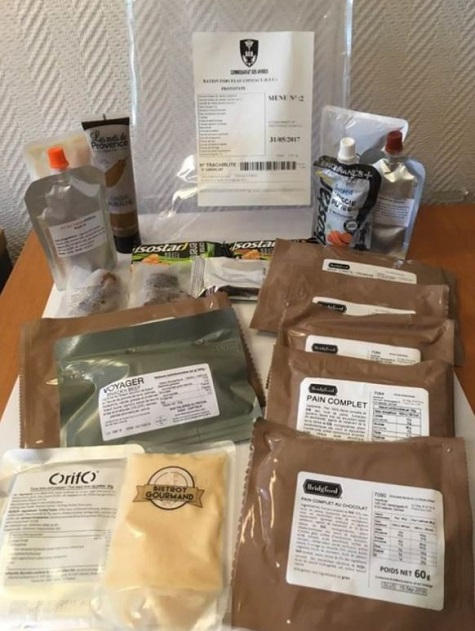Jan 30, 2017
google translation of
NH 90. L'hélico qui n'aimait pas le sel
: "It is beautiful, it is powerful, very versatile ... But it rusts. Even at 40 million euros the unit. The corrosion problem that affects the NH 90 cell used by the French Navy is still unresolved. ..."
now
La disponibilité des hélicoptères militaires a atteint un niveau critique
14 Mai 2017
translated using google:
"After publishing figures on the availability of the fleet of in-service transport aircraft in the French armed forces, MP François Cornut-Gentille has just received a response from the Ministry of Defense concerning the Park of French military helicopters. And to say that it is alarming!
Indeed, of all these data, no fleet reaches the 50% of availability although the Dauphins and the Panther approach there strongly, followed by the venerable Gazelles. The worst student being the Cougar, with a terrifying availability rate of 9.90%!
As the Military Zone website notes, "an aircraft is said to be 'available' if it is' fit for less than six hours, at least one mission corresponding to those indicated in its Military Characteristic Sheet, ".
Finally, it is necessary to specify that these data are averages and that equipment deployed in external operations and engaged in national territory for public service missions generally have a much better availability than those remaining in mainland France (training and training).
NAVY
• ALOUETTE III (average age of 42.30 years):
As of December 31, 2016, the Alouette III's availability rate is 33.90% for a fleet of 20 aircraft (19 today, as one was lost on 31 January in New Caledonia), with a cost of maintaining An operating condition of € 18.54 million.
As of December 31, 2015, the availability rate was 47.60% for a fleet composed of 21 units.
• DAUPHIN and PANTHER (mean age 23.70 years):
As of December 31, 2016, the Dauphin and Panther's availability rate is 49.60% for a fleet composed of 27 aircraft, with an operating cost of 50.89 million euros.
As of December 31, 2015, the availability rate was 51.10% for a fleet composed of 27 units.
• LYNX (mean age of 35.80 years):
As of December 31, 2016, the Lynx availability rate is 26.70% for a fleet of 18 aircraft, with an operating cost of 27.31 million euros.
As of December 31, 2015, the availability rate was 17.50% for a fleet of 20 units.
• NH-90NFH CAIMAN (average age 3.40 years):
As of December 31, 2016, the availability rate of the NH-90NFH Cayman is 38.40% for a fleet of 18 aircraft, with an operating cost of 47 million euros.
As of December 31, 2015, the availability rate was 32% for a fleet of 15 units.
LIGHT ARMY OF THE EARTH (ALAT):
• Gazelle (average age of 31.40 years):
As of December 31, 2016, Gazelle's availability rate is 45.10% for a fleet of 101 aircraft, with an operating cost of 54.13 million euros.
As of December 31, 2015, the availability rate was 42.10% for a fleet of 115 units.
• TIGRE HAP / HAD (average age 5.50 years):
As of December 31, 2016, the Tiger HAP / HAD availability rate is 25.60% for a fleet of 59 aircraft, with an operating cost of 88.81 million euros.
As of December 31, 2015, the availability rate was 21.40% for a fleet of 51 units.
• COUGAR (average age of 26.30 years):
As of December 31, 2016, the Cougar's availability rate is 09.90% (!) For a fleet composed of 26 aircraft, with an operating cost of 40.27 million euros.
As of December 31, 2015, the availability rate was 12.20% for a fleet composed of 27 units.
• NH-90TTH Cayman (average age 3 years):
As of December 31, 2016, the NH-90TTH's availability rate is 41.40% for a fleet of 21 aircraft, with an operating cost of 61.53 million euros.
As of December 31, 2015, the availability rate was 47.60% for a fleet composed of 17 units.
AIR FORCE :
• H225M CARACAL (mean age of 10.90 years):
As of December 31, 2016, the Caracal availability rate is 31.70% for a fleet composed of 18 aircraft, with a cost of maintenance in operational condition which amounts to 40.40 million euros.
As of December 31, 2015, the availability rate was 34.40% for a fleet of 18 units.
Mixed fleet ALAT and Air Force:
• Fennec (average age of 24.70 years):
As of December 31, 2016, the Fennec (Air and Earth) availability rate is 37.10% for a fleet composed of 58 aircraft, with an operating cost of 31.27 million euros .
As of December 31, 2015, the availability rate was 43.80% for a fleet of 58 units.
• Puma and Super Puma (average age 41.40):
As of December 31, 2016, the availability of Puma and Super Puma (Air and Earth) is 27.70% for a fleet of 105 aircraft, with an operating cost of 106.95 million Of euros (!).
As of December 31, 2015, the availability rate was 32.70% for a fleet of 105 units."
C'est la vie







